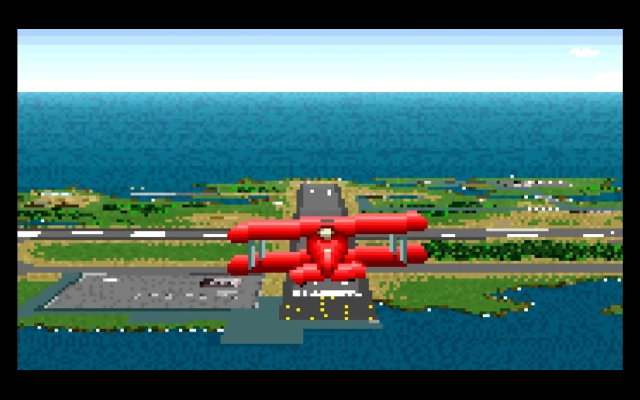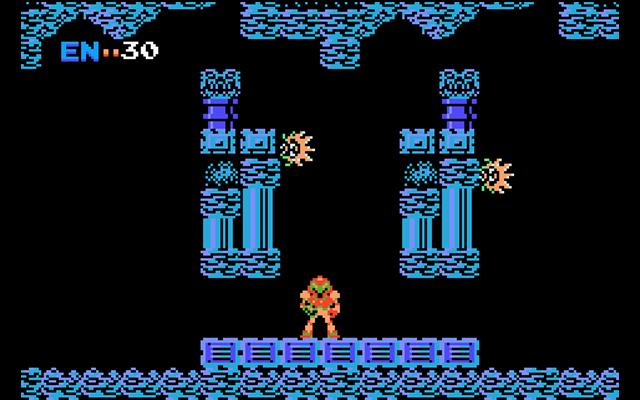Wing Commander: A Must-Play for Space Sim Enthusiasts and Retro Gamers

Wing Commander, developed by Origin Systems and released in 1990, is one of the most influential and beloved space combat simulators of all time. Created by Chris Roberts, the game blended fast-paced dogfights with an epic narrative, deep character development, and stunning graphics that pushed the boundaries of PC gaming in the early 90s. Wing Commander wasn’t just a game—it was a cinematic experience that set a new standard for storytelling in video games, making players feel like they were part of an interstellar war for humanity’s survival. Its legacy endures, with Wing Commander remaining a touchstone for fans of both space combat games and narrative-driven experiences.
The Premise of Wing Commander
In Wing Commander, players take on the role of a young starfighter pilot serving aboard the TCS Tiger’s Claw, a massive space carrier at the forefront of humanity’s war against the Kilrathi, a fierce and technologically advanced alien race. Set in the distant future, the game follows the escalating conflict between the Terran Confederation and the Kilrathi Empire, with humanity’s fate hanging in the balance.
The player is given the callsign “Bluehair” (later known as Christopher Blair in sequels), and their journey unfolds through a series of intense space combat missions. As the player progresses, they must fight off waves of Kilrathi fighters, protect convoys, engage in large-scale fleet battles, and navigate complex storylines that change based on the player’s performance in missions. Success or failure on the battlefield influences the narrative, with different branches leading to either glorious victory or devastating defeat.
Engaging Gameplay and Dynamic Combat
What set Wing Commander apart from other games of its era was its combination of dynamic space combat and immersive storytelling. The core gameplay revolves around piloting various starfighter ships and engaging in dogfights with enemy Kilrathi forces. Players have control over every aspect of their ship, from maneuvering and targeting to managing energy levels, shields, and weapons systems. The game’s flight mechanics are fluid and responsive, giving players the freedom to perform complex maneuvers in 3D space as they chase down enemy fighters or defend against overwhelming odds.
Combat in Wing Commander is fast-paced and thrilling, with a strong emphasis on tactics and strategy. Players can choose from a variety of ships, each with unique strengths and weaknesses. Some ships are faster and more agile, ideal for dogfights, while others are heavily armored and equipped with powerful weaponry, making them better suited for bombing runs or capital ship engagements. The diversity of ships and mission types keeps the gameplay fresh and challenging.
One of the game’s standout features is its mission branching system. Unlike many games at the time, Wing Commander didn’t follow a linear progression. Instead, the player’s success or failure in missions determined the direction of the story. Completing objectives and winning battles advanced the war effort, while failures could result in setbacks, tougher missions, or even losing key allies. This gave the game a dynamic feel, where every mission carried weight, and players were encouraged to strive for perfection to lead the Terran Confederation to victory.
Cinematic Presentation and Storytelling
While the space combat in Wing Commander was a major draw, the game’s cinematic presentation and storytelling were what truly set it apart. The game featured elaborate cutscenes, detailed ship briefings, and interactive dialogue sequences that made players feel like they were part of a living, breathing universe. The Tiger’s Claw served as the player’s home base, and between missions, players could explore the ship, interact with their fellow pilots, and receive updates on the war effort.
The characters in Wing Commander were not just faceless NPCs—they were well-developed, with unique personalities, backgrounds, and relationships with the player. Players could build camaraderie with their fellow pilots, who would react to their successes and failures on the battlefield. These characters would often join the player in missions, adding an extra layer of emotional investment, especially when a beloved wingman was shot down in combat.
The game’s plot unfolded like an interactive movie, with branching storylines, character arcs, and high-stakes drama. Wing Commander didn’t just ask players to complete missions; it asked them to take part in a larger narrative, where their actions had real consequences. This was revolutionary for its time and set a new benchmark for storytelling in video games.
Graphics and Sound Design
For a game released in 1990, Wing Commander was a technical marvel. The game made full use of the cutting-edge hardware available at the time, with detailed sprite-based graphics that rendered epic space battles in stunning detail. The ships, both human and Kilrathi, were intricately designed, and the game’s environments—from asteroid fields to space stations—were richly detailed.
The visual design extended beyond the combat sequences. The Tiger’s Claw was brought to life with detailed interiors, from the ship’s briefing room to the bar where pilots would gather between missions. The characters themselves were represented by hand-drawn portraits that conveyed their emotions and reactions, adding depth to the game’s story.
The sound design in Wing Commander was equally impressive. The game featured a dynamic soundtrack that adjusted based on the action on screen, ramping up the tension during combat and providing a more subdued, atmospheric tone during quieter moments. The sound effects, from the roar of starfighter engines to the crackling of energy weapons and explosions, further immersed players in the game’s intense space battles.
Cultural Impact and Legacy
Wing Commander was a massive success, both critically and commercially. It set new standards for space combat games, blending fast-paced action with a deep and engaging narrative. The game’s innovative storytelling, dynamic mission system, and cinematic presentation earned it widespread acclaim and led to a series of sequels, spin-offs, and expansions that further expanded the universe.
The success of Wing Commander also helped elevate its creator, Chris Roberts, as a visionary in the gaming industry. Roberts’ passion for cinematic storytelling and complex game mechanics influenced not only the Wing Commander series but also the broader space simulation genre. Games like Star Citizen, which Roberts later developed, owe much of their DNA to the foundation laid by Wing Commander.
The legacy of Wing Commander can be seen in many modern space simulators and story-driven games. Its combination of immersive gameplay, character-driven narratives, and branching storylines became a template for many games that followed. Even today, Wing Commander is fondly remembered by fans of retro gaming and space combat simulators, and its influence continues to resonate in the industry.
The Art of Blending Action and Storytelling
What makes Wing Commander such an enduring classic is its ability to blend action-packed space combat with deep, narrative-driven gameplay. The game’s balance of thrilling dogfights, complex missions, and character development created an experience that felt fresh and unique, even decades after its release. Wing Commander wasn’t just about shooting down enemy fighters—it was about taking part in an epic war, making meaningful decisions, and experiencing the highs and lows of life as a fighter pilot.
This balance of action and storytelling is what helped Wing Commander stand out from other games of its time. It set a new standard for what video games could be, proving that they could be just as compelling and cinematic as films or novels.
Conclusion
Wing Commander is a landmark title that revolutionized the space combat genre and set a new standard for cinematic storytelling in video games. With its dynamic space battles, engaging narrative, and innovative mission structure, Wing Commander offered players an experience that was both thrilling and emotionally resonant. Whether you’re a longtime fan of the series or a newcomer to the genre, Wing Commander remains a must-play title that continues to inspire and captivate players to this day. So, gear up, take to the stars, and defend humanity in Wing Commander—a game that truly defined its era and shaped the future of gaming.








